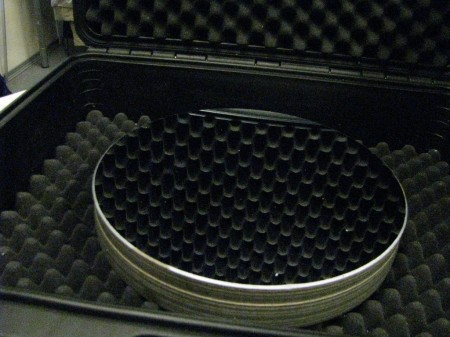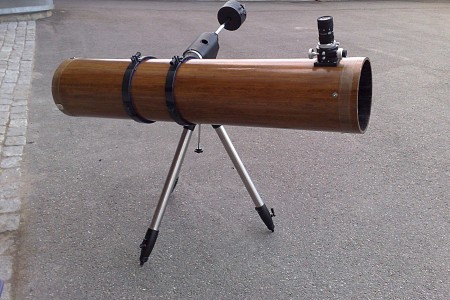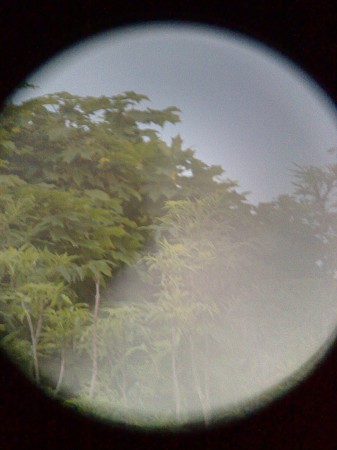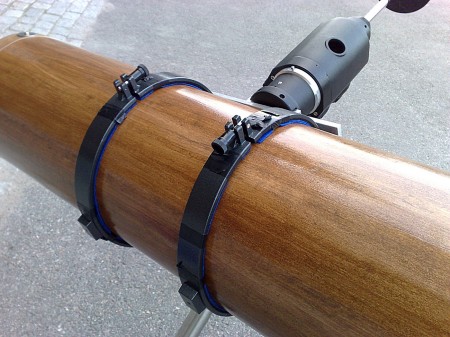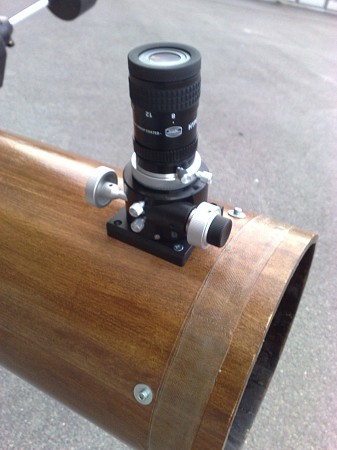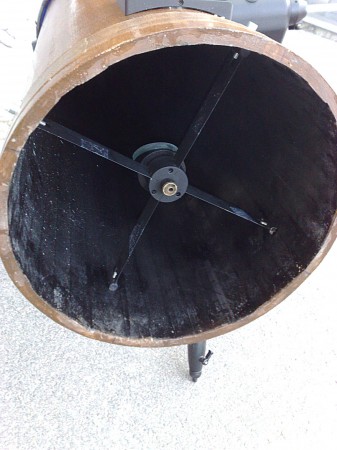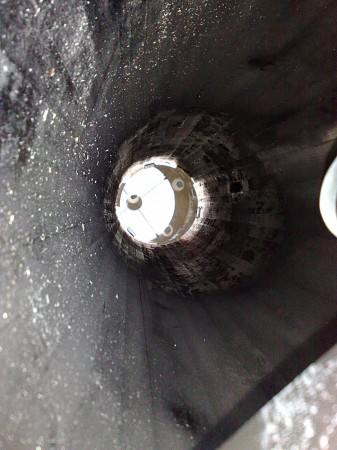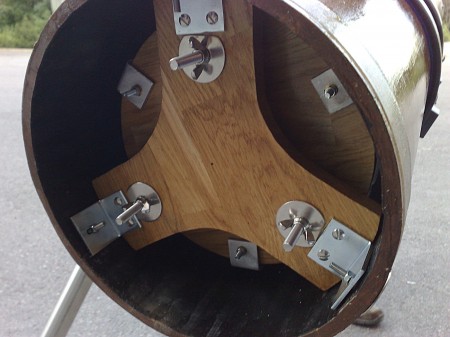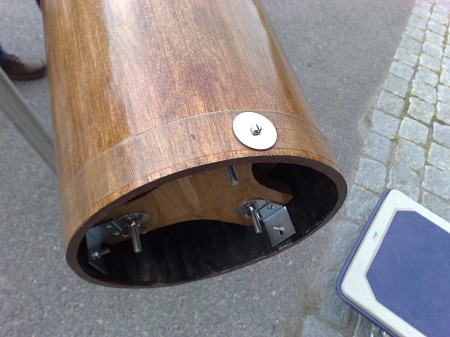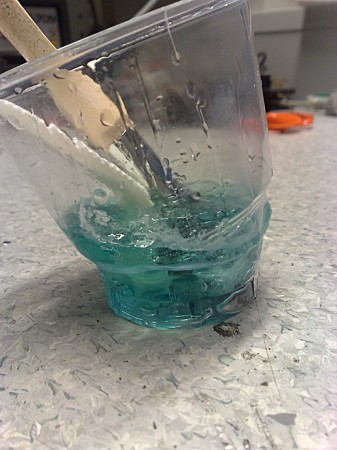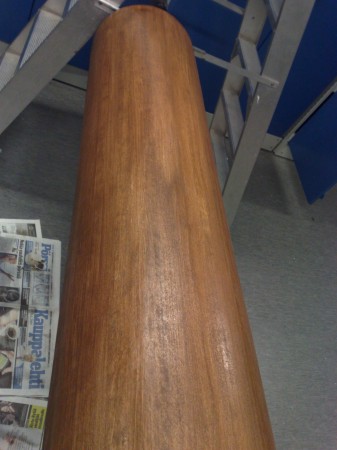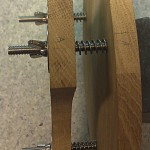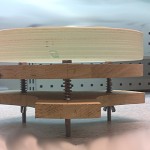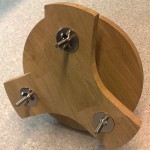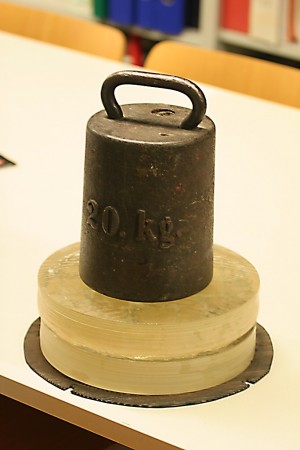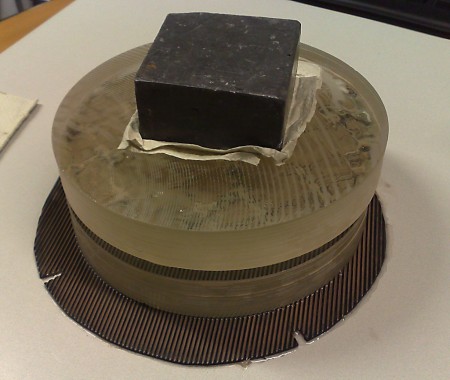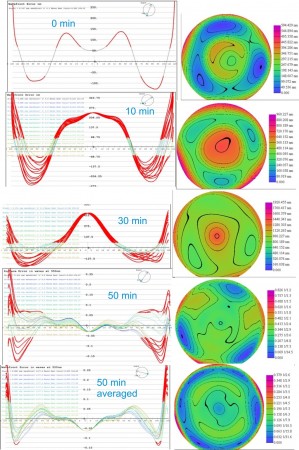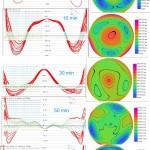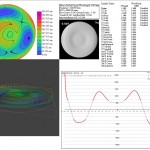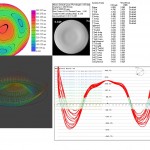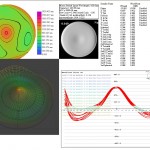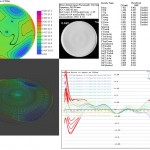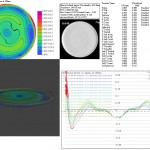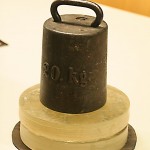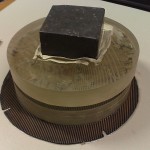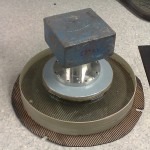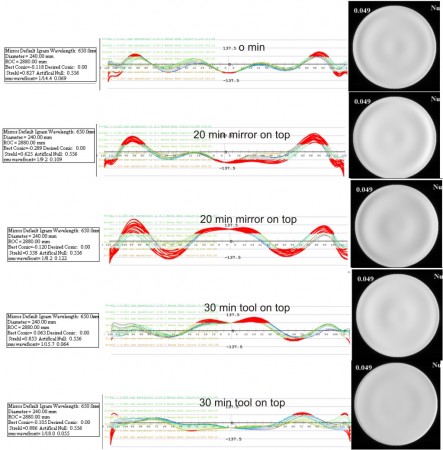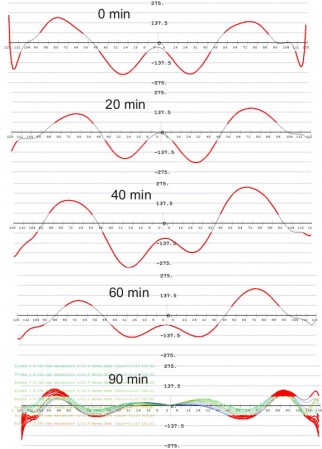Tag: N240
Building a Telescope, a drama in 21 Acts
Act 0 (anecdotal): In which the Builders catch the Aperture Fever and start to dream of mirrors large.
Act 1 (2008 July 22): In which the Builders acquire the Glass and first smell the Carborundum.
Act 2 (2008 July 30): In which the Glass is bevelled.
Act 3 (2008 August 1): In which the Builders observe a partial solar-eclipse.
Act 4 (2008 August 4): In which, after much work, the sagitta deepens to 2 mm.
Act 5 (2008 September 1): Birth of the pitch-lap.
Act 6 (2008 September 4): In which polishing begins and an early Ronchi-test is performed.
Act 7 (2008 September 28): In which the Focault-test is tried but the Builders yearn for something more quantitative.
Act 8 (2008 November 6): (tragic) In which a secondary-holder is turned on the New Lathe - only to be abandoned later.
Act 9 (2008 November 7): In which the builders cook-up a Bath Interferometer around a HeNe-laser.
Act 10 (2008 November 8 ): In which Interferograms are first photographed.
Act 11 (2008 November 18): In which the Builders inhale an inordinate amount of saw-dust and the Tube is born.
Act 12 (2008 December 2): In which the Interferometer's younger sibling is born.
Act 13 (2008 December 6): In which polishing continues.
Act 14 (2008 December 7): In which the Glass is polished spherical
Act 15 (2009 January 17): In which the Glass is figured to its final parabolic shape.
Act 16 (2009 January 17): In which the polishing tools are presented and make their exit.
Act 17 (2009 March 22): In which the Builders travel to a Big Telescope and preach of Interferometry to crowds.
Act 18 (2009 April 9): Birth of the Mirror Mount.
Act 19 (2009 June 12): In which the Tube acquires a colour reminiscent of much nobler tree-species.
Act 20 (2009 June 14): In which the Epoxy cures too fast and the Builders curse.
Act 21 (2009 July 2): (triumphant!) In which the focuser and spider are aquainted with the Tube, and the First Light is seen.
First Light!
After 11 months in the making, July 2nd 2009 will be the historical date to remember when our 240 mm Newtonian saw First Light! July is not dark at all in Finland, but that didn't prevent us from setting up in the back-yard to have a look at the moon. Predictably the clouds soon rolled in, and the first light picture shows trees. Apologies for the poor quality, a snapshot with my N95 phone-camera through the eyepiece:
Nevertheless, spirits were high as we earlier during the day with doubts in our minds had bravely drilled holes in the pristine wood-tube for the focuser and the 2ndary-spider. We were not 100% sure that the image would be nice or the focus-plane at the correct position - but everything seems to have turned out OK!
This picture shows the 300 mm telescope-rings. They are now quite close together and we plan on making a wider support for them. We needed to add two layers of felt-cloth under them to get a nice fit. This scope is much heavier than the 80ED, and it's immediately clear that an EQ6-class mount is not overkill at all.
The 2-speed Crayford focuser with a 2" to 1.25" converter and an 8-24 mm click-stop zoom eyepiece. The grey ring around the scope is a 40 mm glassfiber band which was added to both ends of the tube as reinforcement. Two bolts that hold the spider in place are visible, one under the focuser and one just above the black fine-focus wheel.
The front end of the tube with the spider holding the secondary mirror. The inside of the tube was spray-painted black once, but we may still improve on that later.
A look inside the tube. At the bottom we see the parabolic 240 mm primary mirror, still uncoated, so it only reflects about 4 % of incoming light. Through the right edge of the mirror the mirror-mount and the collimation bolts are visible. An image of the secondary mirror is visible to the left.
The back-end of the tube holds the primary mirror mount. This consists of two wooden boards, one bolted to the tube with three L-shaped fittings, and the other 'floating' on top supported by three spring-loaded collimation bolts. The three wing-nuts are used for collimation.
Another view of the back end of the scope which shows the glassfiber reinforcement, and big washers used to spread the load of the primary mirror mount.
Exothermic Epoxy
When epoxy cures it releases heat in an exothermic reaction. I was adding some glass-fibre reinforcement to the telescope tube and mixed 140 g of L285 epoxy into an ordinary plastic cup. I got about half-way through the job when I noticed the cup heating up. I tried putting it in a cold water-bath, but it was too late by then... It quickly got very hot and all of it cured instantly! At room temperature this resin should have a 60 min pot-life, but now it cured in about 5 minutes. Not much harm done, but I understand these things can cause fires and all kinds of trouble when people deal with kg or tens of kg amounts.
Note to self: 100 g or more of L285 needs to be mixed in a shallow container with lots of surface-area which provides cooling. RTFM.
Does anyone else have pictures or stories about exothermic melt-downs?
Telescope Tube Painted
The mirror has been figured and ready for some time now, but we've been so busy with other things that the telescope hasn't been finished. Now the plan is to assemble the mirror-cell, mount the 2ndary, and install the focuser so we can do some initial star-testing before aluminizing the mirror. Nice images of the moon and planets (Saturn, Jupiter) should be doable even though it's summer.
Mirror mount
The mirror is now parabolized to better than 1/18-wave RMS, so we are assembling the telescope to star-test it prior aluminizing the mirror. If and when everything looks OK through the scope we will send the mirror to be aluminized.
We came up with this mirror holder out of ca 20mm thick oak board. There are three M8 screws that support the mirror cell. Springs push it upwards, and the wing-nuts used for collimation pull down. It's all going to be attached to the wooden tube by three L-brackets.
Polishing tools
A few pictures and some notes on the polishing tools which we've used for the 240mm F/6 mirror for the Newtonian telescope we are making.
This is the full-size pitch-lap on top of the mirror. It's important to have good contact between the tool and the mirror at all times, so the pitch is pressed to conform to the mirror before each polishing sessions. This can be done either at room temperature, called cold-pressing, or by first heating the pitch-lap and the mirror in e.g. hot water, which is called hot-pressing.
We've usually hot-pressed the lap just after pouring it, and each time we have had to re-open the channels. The best way to open the channels we've found is with a saw - seems to work nicer and cleaner than with a sharp knife. When the lap has good contact with the mirror only cold-pressing is required before each polishing session. The image shows cold-pressing with a 20 kg weight on top of the tool, perhaps a bit on the heavy side.
This is the smaller weight, about 5.5 kg, we use on top of the tool when polishing. There's a significant difference in the speed of polishing with and without this weight. At first we did about 10 hours of polishing without a weight, but I'm sure this time could have been cut in half by use of this weight (or something slightly heavier). Ideally the weight should be evenly distributed over the mirror/tool, a steel disk of the same diameter would be good. But we haven't noticed any significant distortion of the mirror or tool with this smaller lead-weight.
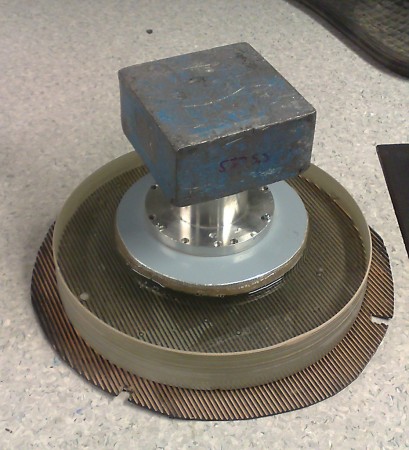
When figuring the mirror from a sphere to a paraboloid this smaller 60% tool is used. Here it's cold-pressed against the mirror. Since this is an F/6 mirror the correct paraboloid shape is very close to the spherical shape that the mirror has at the end of polishing. We've found about 50 minutes of work with this tool is enough.
Figuring
After a few (2-3) more hours of polishing with the full-size lap the mirror was fully polished. No holes or marks can be seen in the mirror surface with an upside-down 25mm eyepiece. Final polishing progressed rapidly when we used a weight (4-6 kg) on top of the mirror/tool.
The following task is called figuring, where the surface is taken from a sphere to a praboloid. Following advice from experienced mirror makers we are doing this with a smaller pitch-lap which is about 60% of the diameter of the mirror. We're using W-shaped strokes mostly in the middle of the mirror.
This picture shows the progress over a few 10 min or 20 min figuring sessions, with measurements taken after each session.
The main difference between a sphere and a praboloid is evident. The paraboloid is deeper in the middle, so the error plots above show a 'hill' at the centre which needs to be polished down. The top four measurements are single measurements and show a significant amount of distortion with three lobes at 120 degrees apart. I'm not sure where this originates yet. The final measurement at the bottom is an averaged one where we turned the mirror 90 degrees between each measurement, and shows little or no hills or valleys at 120 degrees apart. We are now at 1/17 wave rms error, which seems OK. The mirror is still too high at the very edge, along an 8mm wide strip in from the edge, which we will try to correct tomorrow.
Sunday polishing
Out pitch-lap is one that really doesn't work when polishing mirror-on-top. Should have realized that yesterday. The first two 20min sessions today were spent making the shape of the mirror worse, before we switched to tool-on-top for the last 30min + 30min. Suddenly it all goes much better, and we are back to a nice better than 1/10 wave sphere. We still see small dots from a laser-pointer reflection, so it's not time for figuring just yet.
The graph shows the wavefront error in nm, compared to a sphere. The Foucault images on the left are simulated from a zernike fit to the surface measurement.
Polishing continues
Something must have been wrong with the pitch-lap on Friday, since we began today with a strange bump in the middle of the mirror. The picture shows how the shape of the mirror (actually the wavefront, compared to a sphere) changed through today's polishing session. Slowly getting back to a good spherical shape. Hopefully the mirror will be polished out soon and we can start figuring it into a paraboloid.
